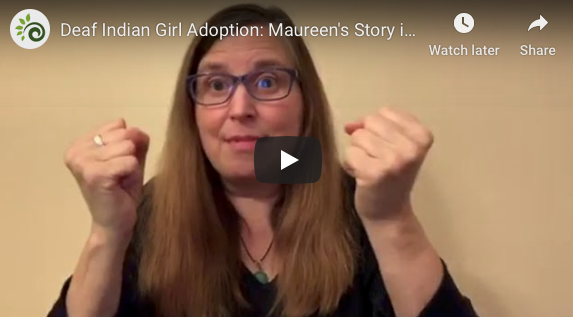Advice for Prospective Adoptive Deaf Parents Maureen shares her Deaf Indian adoption experience and offers two important pieces of advice for prospective adoptive parents. Communication Access and Medical-Related Issues Hi, I’m Maureen Behrens. I’d like to share my adoption story, focusing on communication access and medical-related issues. I adopted my daughter about 10 ½ years ago, through the Holt International …
Read More19
Sep
2019

Deaf Indian Adoption: Maureen’s Story
By: Deaf Counseling Center
Category: Adoption, ASL, Assessment, Audism, Children, Counseling, Deaf, Health, Language, Medical, Mental Health, National, Parenting/Families, Psychology, Therapy, Videos
Tags: Adoption, ASL, Deaf Counseling, Deaf Counseling Center, Deaf Therapy, Indian, Medical, National Deaf Therapy, Video



